The United States Military had this fascination with Missiles hoping to find the single thing that would shoot down the enemy plane and make it easier than dog fighting. Unfortunately it took Vietnam before they really started dog fighting and not super reliance on technology.
The United States military does not like to talk about the Battle of Palmdale. It is undoubtedly one of the most embarrassing American military defeats in history – and it happened right over U.S. soil.
Although not a single soul was lost, over 1,000 acres of American land was destroyed, the military was left embarrassed, and several Americans nearly perished in their own homes and vehicles.
All of this from a single enemy who could not even shoot back. This formidable foe was never defeated, or even damaged, by the American military.
Who was this foe, and why did the United States military so thoroughly fail to defeat it?
The Cold War arms race between the United States and the Soviet Union requires little introduction: the two superpowers of the world constantly wanted to ensure they had a military advantage over the other in the case of conflict.
One element of this race was the development of guided air-to-air missiles in the 1950s.

By 1956, in the late stages of testing, live fire tests became necessary. These were conducted against remote-controlled planes (“drones”), including the Grumman F6F-5K Hellcat.
Although the Hellcats were well-regarded during World War 2, they were obsolete by 1956, and this made them great practice targets.
On August 16, 1956, one of the Hellcat drones was launched from Naval Air Station Point Mugu in California. It was painted bright red to make it an easier target for the Navy which was to take it down with their new air-to-air missiles.

For some reason, the drone was no longer responding to its controls. In response, the Air Force scrambled two fighters to take it down using unguided air-to-air rockets.
The relative strength of forces seemed firmly in the Air Force’s favor. The Air Force selected two Northrop F-89 Scorpions from nearby Oxnard Air Base for the task. The Scorpions were early jet-powered fighters – more than a match for a propeller plane.
Between them, the Scorpions had 208 rockets. On the other side stood an unarmed, unmanned, bright red, outdated drone.
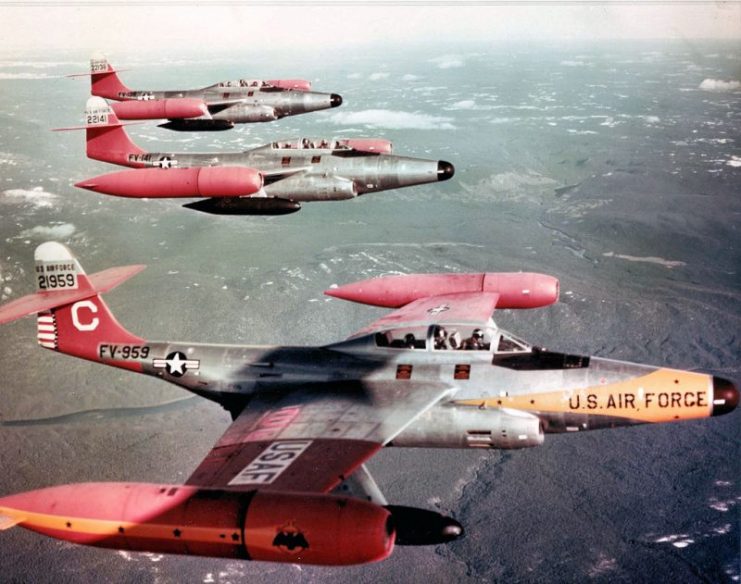
The Air Force obviously did not want to shoot down the drone over a populated area, so they waited for it to pass over Los Angeles. It continued to turn until it approached the sparsely populated Antelope Valley, at which point the Scorpions engaged.
Or at least they tried to. It turned out that the new fire control system was not all it was cracked up to be, and the rockets failed even to fire. However, the fighters were able to revert to a manual control mode not using the computerized system.
Unfortunately, the planes’ gun sights had been removed due to their supposed obsoleteness after the computerized system was added. In addition, the rockets in question, the MK 4 “Mighty Mouse,” were notoriously inaccurate.
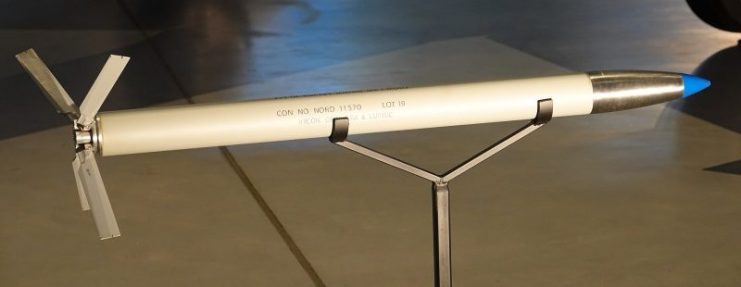
However, the rockets only glanced against the drone’s fuselage, failing to detonate.
With 124 remaining rockets, the fighters made another pass, and each launched 32 rockets. This time none even made contact.
With only 60 rockets remaining, the pilots decided to recalibrate their intervalometer, hoping to increase the effectiveness of their rockets. This would be their last chance to take down the drone as they were running out of fuel as well as ammunition.
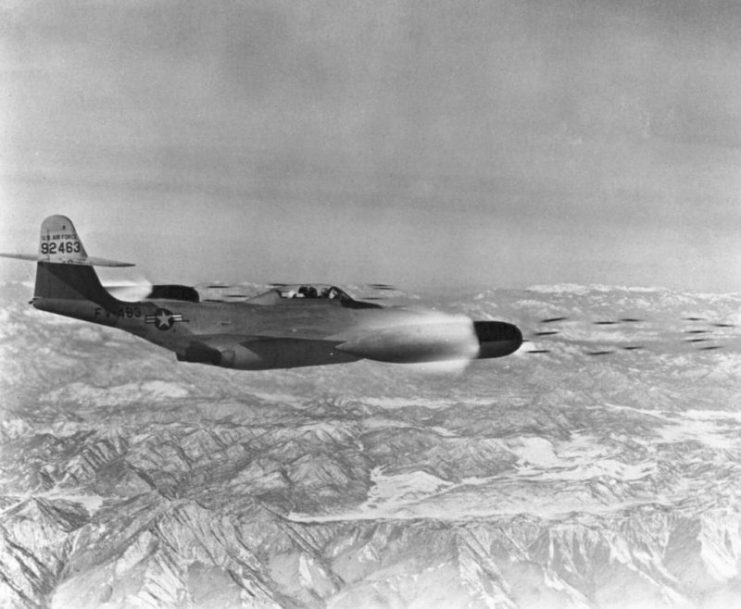
The pilots made one final pass, each launching their remaining 30 rockets as the drone approached the city of Palmdale. The last of the Scorpions’ 208 rockets again failed to make contact… at least, with the drone.
As the pilots returned to base, it became clear that their rockets had made contact, just not with the drone. Although the Mk. 4 rockets, if they missed their target, were supposed to disarm as their speed decreased, something went wrong with this system.
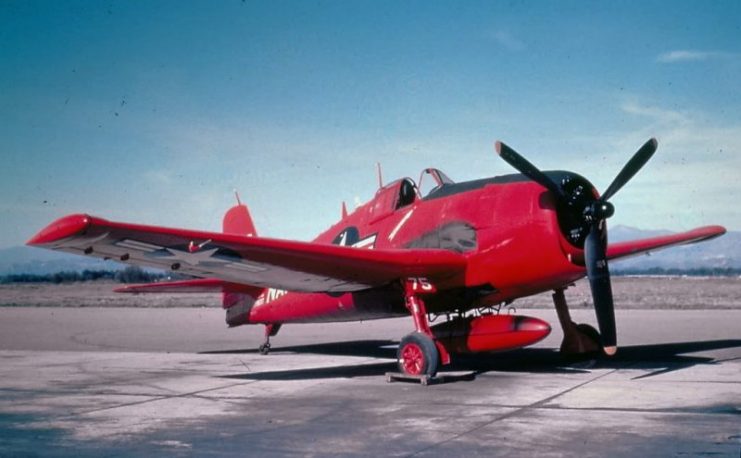
The first fire was around Castaic and destroyed 150 acres. Another rocket fell near Placerita Canyon, where it set a number of oil sumps on fire. That fire nearly reached the Bermite Powder explosives plant, but fortunately was contained around 300 feet away.
At Soledad Canyon, an additional 350 acres went up in smoke, and several smaller fires added to the destruction. All-in-all, over 1,000 acres were destroyed by the fire.
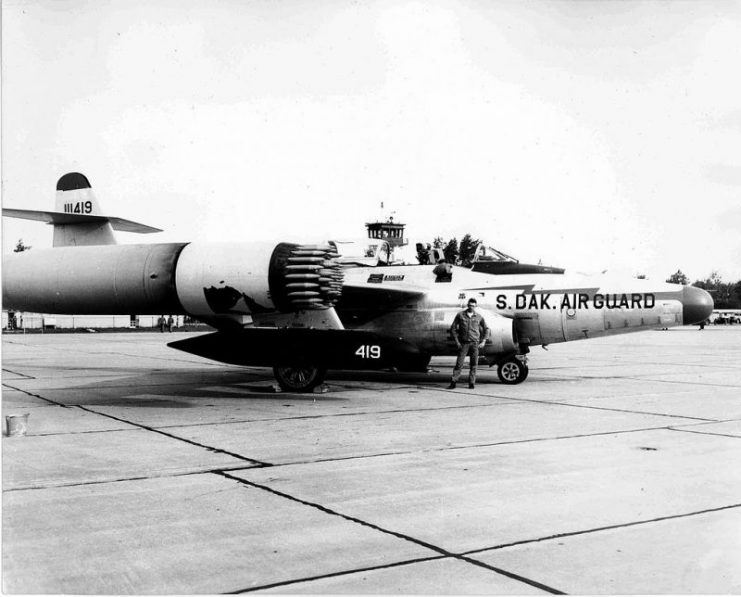
A number of the rockets hit houses, nearly causing several fatalities. One piece of shrapnel flew through a woman’s window, bounced off her roof, and eventually smashed into a kitchen cabinet, where it came to rest.
Another house was hit with several fragments, which sliced through the garage and living-room, nearly hitting the woman who lived there.
Another rocket detonated right in front of a man and his mother who were driving along the road, destroying the front of the vehicle. Miraculously, neither was seriously injured.
Finally, a rocket scored a direct hit on another truck, totally destroying it. Fortunately, its occupants had just gotten out.
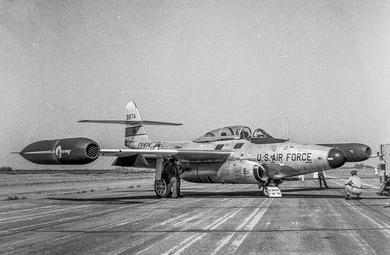
Its remains were eventually recovered in 1997, although it largely disintegrated upon impact.
One thousand acres of land was consumed by fires that took two days and 500 firefighters to extinguish.
Although there were no fatalities, the incident was certainly embarrassing for the U.S. military. Not only had they accidentally inflicted significant damage on American soil and failed to shoot down their target but also many of the brand-new technologies they had developed had proven faulty.
The fact that the remote controls for the Hellcat stopped working in the first place was unfortunate, but the Scorpions’ computer failure was another concern altogether. All of this technology, created to keep ahead in the Cold War arms race, had utterly failed.
However, the United States government learned from these failures. Fire control systems continued to advance, guided air-to-air missile technology became more practicable, and eventually, fail-safes were added to unmanned vehicles.
It would be nearly impossible for another “Battle of Palmdale” to happen today, as modern drones are equipped with fail-safes that will either return them to base if they are not destroyed quickly or cause them to self-destruct at a high altitude.


Navy won again... Air Force never could shoot straight... LOL
ReplyDelete